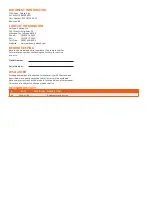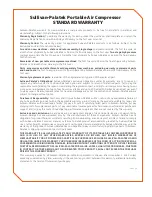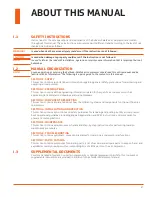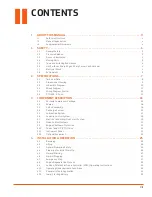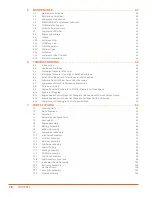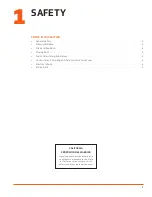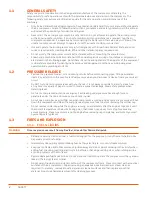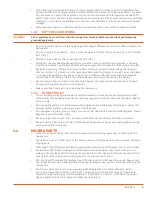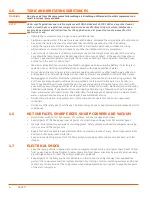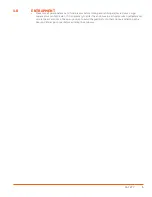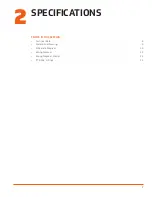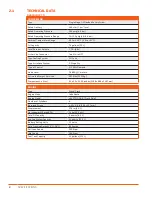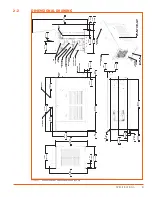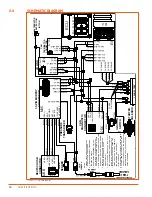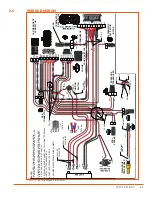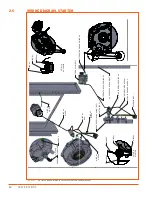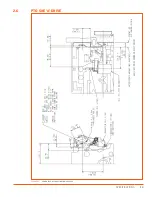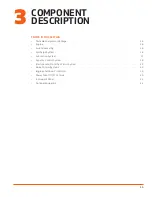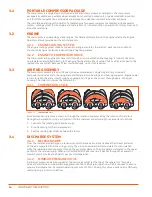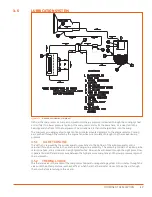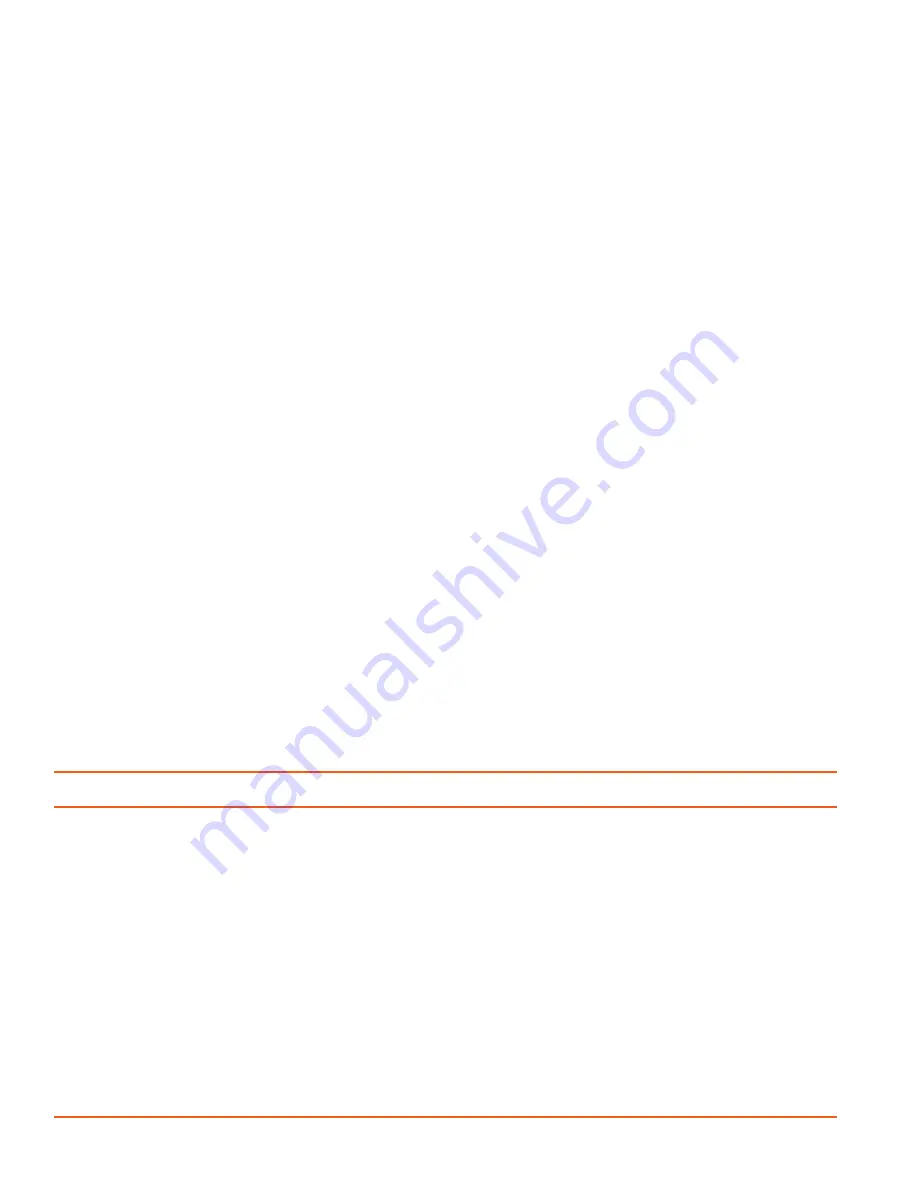
2
SaFETy
1.1
GENERAL SAFETY
Safety is a prime consideration in the design and manufacture of the compressor. ultimately, the
responsibility for safe operation rests with the individuals who use and maintain the compressor. The
following safety precautions are offered as a guide for the safe operation and maintenance of this
machinery:
»
Only trained and authorized personnel who have read and understand this user’s manual should operate
the air compressor. Failure to follow the instructions, procedures, and safety precautions in this manual
will increase the possibility of accidents and injuries.
»
Never start the air compressor unless it is safe to do so. Do not attempt to operate the air compressor
with a known unsafe condition. If an unsafe condition exists or maintenance is required, tag the air
compressor and render it inoperative by disconnecting the battery so others who may not know of the
unsafe condition cannot attempt to operate it until the unsafe condition is corrected.
»
Use and operate the air compressor only in full compliance with all pertinent Federal, State and Local
codes or requirements including oShA, EPA and other relevant agency requirements.
»
Do not modify this compressor or install attachments without consulting the manufacturer.
»
Known and potential hazards associated with the operating and servicing of portable air compressors
are detailed in the following pages. Not all hazards can be anticipated and the operator of the equipment
is ultimately responsible for identifying hazardous and dangerous conditions, avoiding dangerous
operation and preventing accidents.
1.2
PRESSURE RELEASE
»
Remove the pressure from air, oil, and cooling circuits before disconnecting pipes, fittings or related
items. Pay attention to the possible residual pressure when you disconnect a device from a pressurized
circuit.
»
Do NoT try to detect pressure leaks with your hands. It is not always possible to identify a leak from
a tiny hole. use a piece of paper or wood to locate a suspected leakage. Wear safety glasses when
detecting leaks.
»
oil, fuel, or compressed air can cause injuries. Fluid leaking under pressure has enough force to
penetrate under the skin and cause serious bodily injuries.
»
Do not open sump (receiver) oil filler cap when compressor is running and air system is pressurized. Shut
down the compressor and bleed the sump (receiver) pressure to zero before removing the oil filler cap.
»
Do not remove cooler cap while the engine is running, or immediately after the engine stops. Wait until
the coolant temperature is below its boiling point, then loosen cap slowly to its stop to relieve any
excess pressure. Make sure coolant is not boiling before removing cap completely, and protect yourself
by wearing safety glasses.
1.3
FIRES AND EXPLOSION
1.3.1 FUEL & LIQUIDS
WARNING!
Fire or explosion can result from spilled fuel, oil and other flammable liquids.
»
Refuel at a service station or from a fuel tank designed for the purpose. Ground the machine to mobile
dispensers prior to refueling.
»
Immediately clean up any spills or leaking fuel, battery electrolyte, oil, or anti-freeze solution.
»
Keep sparks, flames, and other sources of ignition away and do not permit smoking in the vicinity when
adding fuel, checking or adding electrolyte to batteries, checking or adding oil, or when refilling air line
anti-icing systems with anti-freeze.
»
Replace damaged fuel tanks or lines. Do not store or attempt to operate the compressor with any known
leaks in the fuel system or oil lines.
»
Do not permit liquids to accumulate in bottom of the compressor frame. Prevent contact with acoustical
surfaces of the air compressor. Wipe down using an aqueous industrial cleaner or steam clean as
required. If necessary, remove acoustical material, clean all surfaces and then replace acoustical
material. Do not use flammable solvents for cleaning purposes.
Содержание D260UJD4PTOW
Страница 4: ......
Страница 6: ...vi About This Manual ...
Страница 14: ...6 Safety ...
Страница 21: ...13 Specifications 2 6 PTO SAE A DRIVE Figure 2 5 Power Take Off Auxiliary Drive Specs ...
Страница 22: ...14 Specifications ...
Страница 32: ...24 Component Description ...
Страница 44: ...36 Installation and Operation ...
Страница 58: ...50 Troubleshooting ...
Страница 125: ...117 Parts Catalog ...
Страница 134: ...NOTES ...
Страница 135: ...NOTES ...


